After finishing construction on our new house last year, we started turning our attention to landscaping — or, as I fondly call it, sandscaping. Our environment is really challenging for vegetation. The soil is pure sand with no nutrients, we have persistent winds that carry salt in from the Gulf, and our weather can include both long, hot, dry stretches and periods of torrential rain. Plus we are not quite sure what Plant Hardiness Zone applies here on the island. We are much further north than our previous homes in South Florida, but the warm Gulf waters surrounding the island keep temperatures moderate in the winter. Even more confusing, the island seems to have its own microclimate that’s distinct from the mainland.
The sandscaping project is going to involve a lot of trial and error. We’ve been taking note of what we see surviving and thriving in other yards and experimenting with introducing some of our old favorites.
Alfred B. Maclay Gardens State Park
To help inspire us in our home landscape efforts, on a trip to Tallahassee we stopped by Maclay Gardens State Park. We timed our visit to occur during the peak bloom season of early spring, and the only time of the year when the historic home is open to visitors.
Alfred B. Maclay’s father was a wealthy New York businessman and financier, while his wife Louise was an heir to the Fleishmann’s Yeast fortune. They engaged in many pursuits common to the exceedingly rich: owning race horses, breeding show dogs, and having a winter estate in Florida. In 1923 they purchased property north of Tallahassee that had been used for quail hunting. The acquisition included nearly 4,000 acres of land, a primary residential building, and numerous ancillary structures. The Maclays shared a love of gardening and set about turning this vast acreage into a showcase for ornamental plants. Both the home and the gardens have a very pronounced East Asian flair, with azaleas, camellias, and huge podocarpus trees prominently featured among the native oaks.
The property includes a wide brick promenade that makes for a grand entrance to the home, formal gardens with sculptures and water features, several ponds, and miles of less formal trails. In 1953, Louise donated the entire property to the State of Florida with some unusual stipulations. She required that the house and gardens be permanently maintained as a memorial to her husband and enjoyed by the public, but the home could be open only during the time the Maclays normally used the home (January through April). Moreover, the home is fully furnished with artwork, furniture, and even dishes that that the Maclays used, except that Louise thought it unseemly to allow the public to see her bedroom furniture so that room is empty.
The fact that the bookcases are full of books means that visitors have the chance to see some rare gardening books like an early edition of Chapman’s Flora of the Southeastern United States. The home is surprisingly modest considering the wealth of the owners. But I think the real secret to their enjoyment of the property lies in the fact that the home has no kitchen (servants brought food into the dining room from a detached kitchen) and only one bedroom (the children and their nannies stayed in a separate building). And of course all the heavy lifting in the gardens was done by servants as well.
Azaleas and camellias are so common in North Florida that it’s easy to forget they were once exotic imports from the Far East. With some specimens approaching 100 years old, Maclay Gardens provides a unique look at these staples of the southern landscape. In addition, the park staff continue to refresh and supplement the gardens with rare and interesting plants. A peaceful afternoon spent in the gardens was helpful in thinking about goals for our own property.
Meanwhile Back at the Ranch
We could not possibly expect to compete with Maclay Gardens, but we are slowly but steadily working to turn the raw land of our property into something with a little more structure in the landscape. We don’t intend to have formal, highly manicured gardens — we want to keep as much native vegetation as possible and we also don’t want the burden of constant irrigation, trimming, and mowing that comes with formal gardens. Our goal is to supplement our existing palmettos, pines, and oaks to create a landscape that is functional, attractive, wildlife-friendly and relatively self-sufficient.
One important foundational step was adding a new cabbage palm (Sabal palmetto) on the property line between our house and our closest neighbor. Their home was here first, and our back deck now looms over their deck. A nice palm tree will help give us both some privacy screening. Native cabbage palms are harvested from the wild as full grown trees, and are so resilient that they grow back after having their heads and roots trimmed severely for transport. Of course, it will take a year for the full head to be regrown, but at least we started the process by getting the tree in the ground. An old gardener’s adage goes like this:
When’s the best time to plant a tree? Twenty years ago.
When’s the second best time to plant a tree? Today!
We definitely wanted to have cheerful azaleas on our property, and so we installed a few experimental plants in an area we thought they might like. The two plants we added rewarded us with a profusion of fuchsia flowers this spring — despite both being clearly labeled as “lavender” when purchased. We like them quite a bit even though they can’t read. We have high hopes for even more flowers next year. We’ve also added some daylilies, another stalwart of southern gardens, and so far we’ve had blooms on two of them.
Not all our experiments have worked out so well. We planted two small cardboard palms (Zamia furfuracea – they are cycads, not actually palms) because we love these exceptionally drought-tolerant plants with their fern-like fronds. They thrived in the summer, but a cold snap this winter killed them to the ground. One of them is valiantly attempting to grow back but I fear the other is a goner. We probably sit at the very northern tip of their comfortable range.
The final part of our gardening strategy so far has been trying to get the most out of volunteers. Spiderwort (Tradescantia), dune sunflower (Helianthus debilis), and Cherokee bean (Erythrina herbacea) all occur naturally and we encourage them whenever possible. We have transplanted some small red cedars (Juniperus virginiana) from spots they weren’t wanted, and those little guys seem quite pleased with their new spots.
We have only just begun to sandscape, and the project can seem overwhelming at times. This will be a multiyear effort. But it’s nice to already have some successes to keep us motivated!
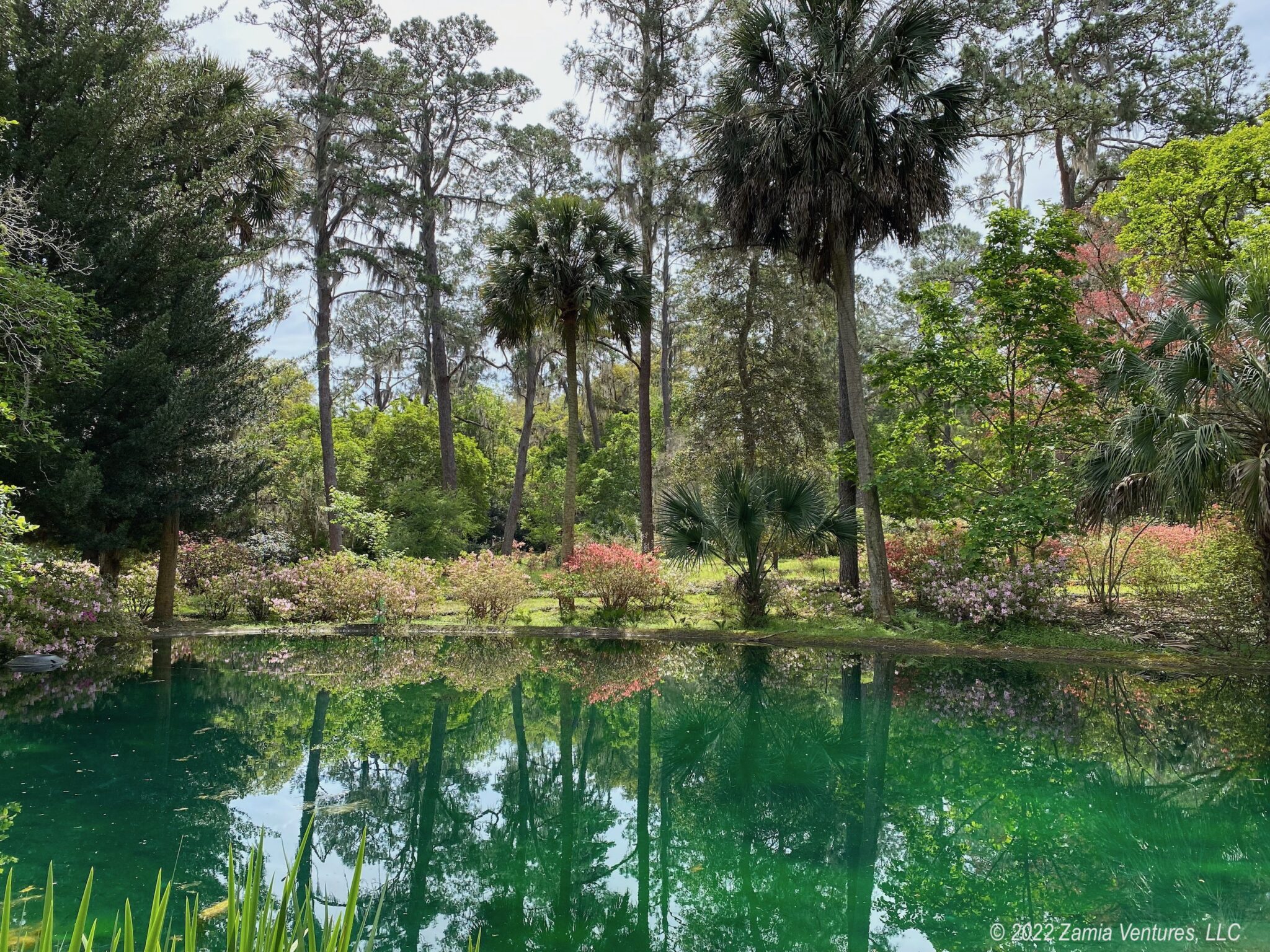
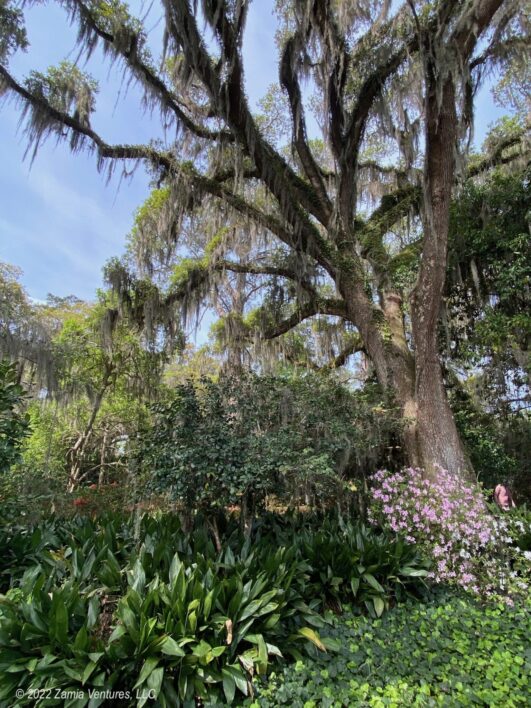
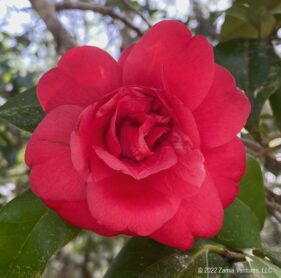
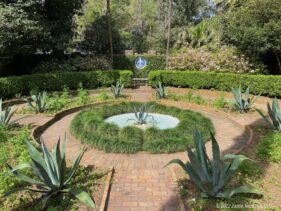
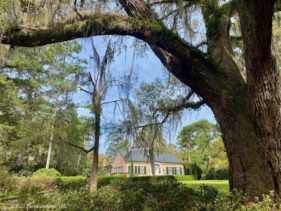
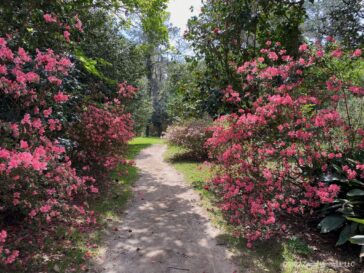
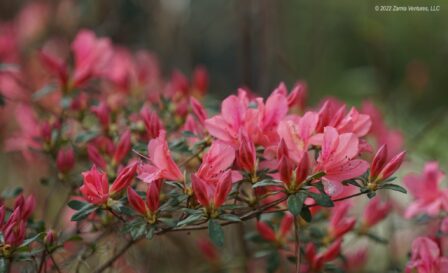
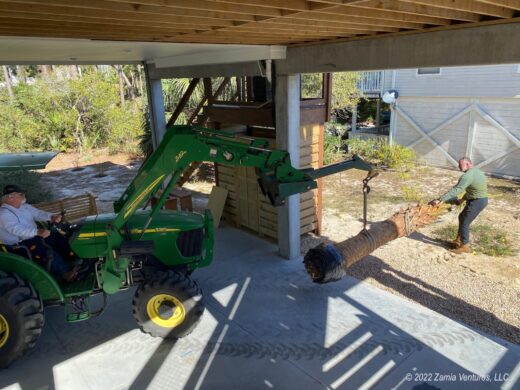
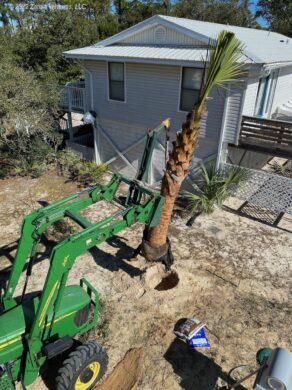
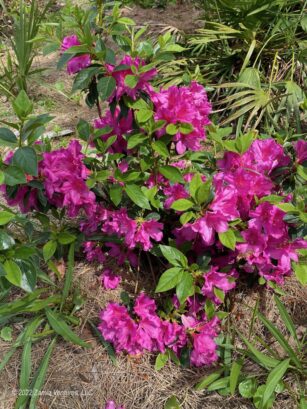
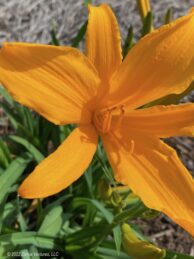
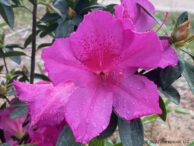
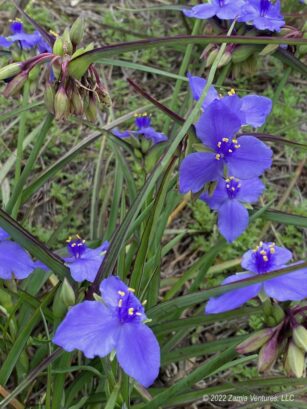
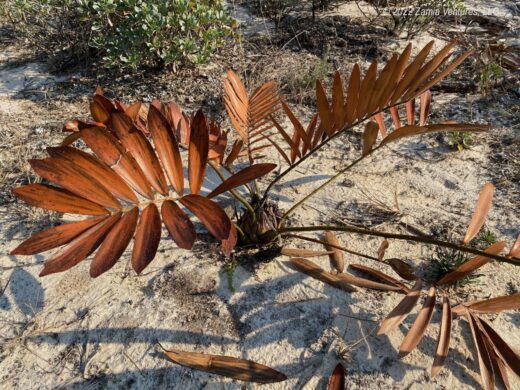
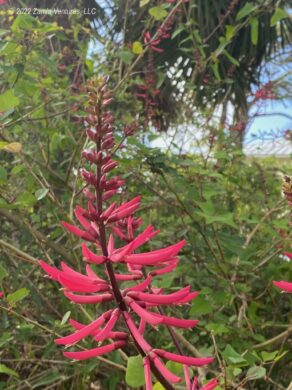
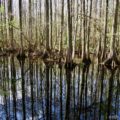
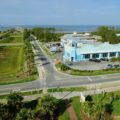
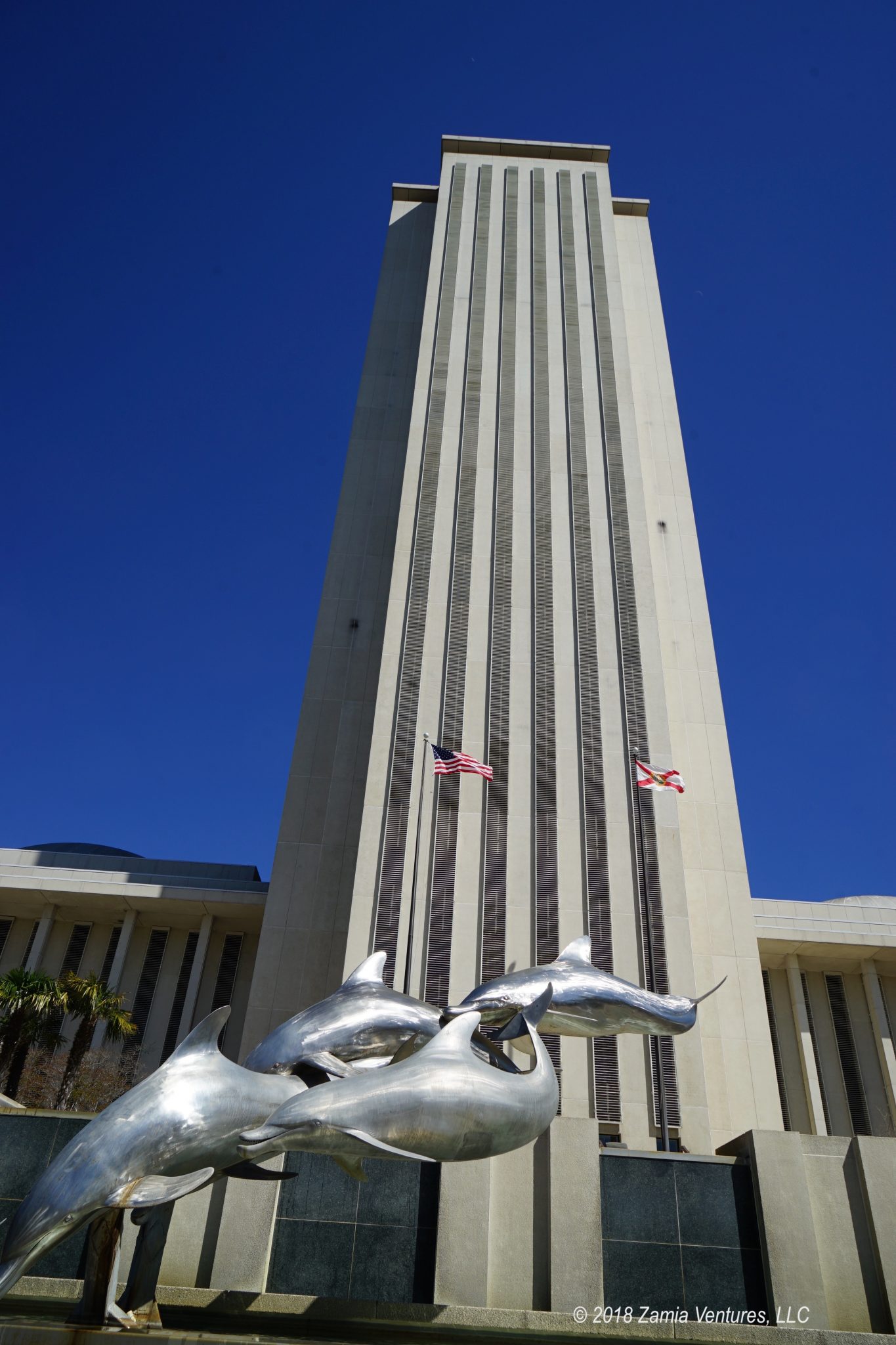
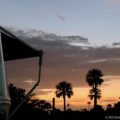
I love Maclay Gardens, too. I used to go every spring during my college years in Tallahassee, and many years later, I’ve resumed the tradition. (Next time I go, I have to look for that gardening book by Chapman!) Now that we’re settled down in Florida, I have dreams of creating a mini-Maclay Gardens here on our property, LOL. Well, at least I can keep planting azaleas and magnolias and camellias, right?
It looks like you’re having great success in your gardening endeavors, which is NOT easy on the island! I think your landscape challenges are even greater than ours. But you’re doing a wonderful job. Oh, and I’m glad your azaleas can’t read, because fuchsia is much more vibrant than lavender.
I liked Maclay Gardens more than I expected! It is much less structured than a typical botanical garden and I found that I really enjoyed the huge massed groupings of azaleas and other plants. It’s planned and intentional but still seems somewhat natural. I’m sure that the Maclays spent many happy winters wandering through the gardens while avoiding the frigid winter temperatures of New York. The Chapman book and a few other rare editions are in the area with the family tree display (in the hallway near the library). Also featured: photos of their prize winning horses and dogs.
We’re pleased with the improvements we’ve made on our yard so far, even though we have a long way to go. Being cautious and experimenting with different species naturally means that we are making slow progress. But it’s still progress!
A gardener after my own heart! Working with what’s native, what’s proven to work, and gathering inspiration from other beautiful gardens. It makes me even more excited to get started on ours! You have super tough conditions, though like Laurel said, you’re doing a great job so far. You already know I’m glad the azaleas match your front door 😊
I’m secretly quite pleased with the fuchsia azaleas — that’s my favorite color variety. But Ken really likes purple flowers so I was hoping at least one would be purple. No matter, since we have plenty of room to add more. We’re definitely leaning into native plants here precisely because the conditions are so unique. Even with lots of fertilizer and compost it’s tough going. It’s fortunate that we actually had a lot of existing vegetation on the vacant lot, because I couldn’t handle trying to landscape the entire 1/3 acre.
I’m amazed anything can thrive in these tough conditions, but I have no doubt you’ll tease out just the right variety of colorful plants to beautify your surroundings. And it sounds like the type of project that’s right up your alley – a little research, a little design, a little experimentation, a bunch of swearing, and “Voila! Perfect!” I’m looking forward to seeing how it all comes together!
How big do you expect your palm tree to be? (ie: is there a reason not to plant more than one?)
I am definitely enjoying the challenge of the sandscaping project, especially because I am willing to be ruthless about experiments that don’t work out. Can’t live without lots of supplemental irrigation, even after 6 months in the ground? Too bad, goodbye!
A healthy cabbage palm will have a head that’s a good 10-12 feet in diameter so it will eventually give us great coverage. Plus we can’t put any palms too close to our septic drain field which limits us a little bit in what we can install on that side of the property.